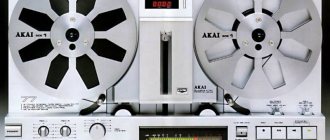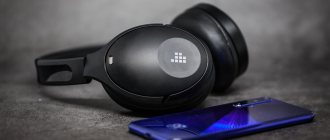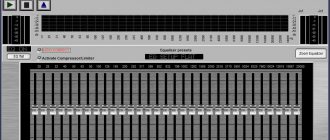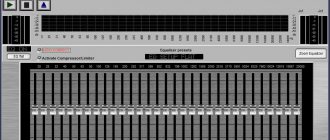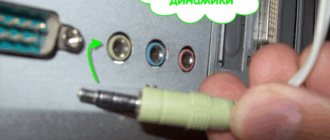Akai TVs
Akai TVsAkai was founded in 1929 by Japanese engineer Masukishi Akai. He focused his enterprise on the production of radio electronics, and for about twenty years the company collaborated with the Japanese military-industrial complex. But since 1948, after the defeat that the Land of the Rising Sun suffered in World War II, Akai management had to transfer production to a peaceful basis.
The production reform turned out to be extremely successful. Now the company produced tape recorders, refrigerators, televisions, and conquered new markets. Since the late 1970s, Akai household appliances have become widely popular in Europe, and around the same time they penetrated into the USSR. The company's employees pay significant attention to innovation, in particular, Akai released the world's first televisions with a remote control and an on-screen menu.
Akai logo
In the 1990s, the company faced a serious crisis, which was due both to economic difficulties and to the fact that one of its managers was involved in fraud. In order to cope with the problems, the brand was forced to join the Hong Kong holding company Grande Group of Hong Kong. Now this holding was selling individual companies the right to produce household appliances under the Akai brand. But this led to a long and complicated international dispute over the ownership of the brand, in which even companies from Russia that at that time had a stake in Akai took part.
Today, Akai TVs, which can be bought in Russian stores, are manufactured under license in our country. They are not transported from abroad, but are assembled in Russia on the production lines of the Kaliningrad enterprises Radioimport and Telebalt, due to which their cost is very low.
Today, under the Akai brand in Russia, both traditional CRT televisions and models with LCD and plasma screens are produced.
Akai CRT TVs
Despite the fact that modern technologies have made it possible to create new models of televisions, which are commonly called “flat” (these include LCD televisions and plasma panels), “volume” CRT devices continue to enjoy some popularity. In Russia, interest in CRT televisions is also determined by their noticeable low cost compared to more modern models. They are purchased with pleasure by representatives of the older generation who do not have the opportunity to buy brand new items. It is these people who remember well the Akai brand, known in the USSR in the 1980s. So at the moment in our country there is a significant target audience that the developers of CRT televisions produced under this brand are targeting.
CRT TV Akai 21CTU93BC
Akai CRT TVs have a simple design (usually black or silver). In order not to look like an anachronism in our time, they are equipped with the following set of functions:
- support for PAL, SECAM, NTSC 3.58/4.43 reception standards;
- convenient remote control;
- well-thought-out on-screen menu with the ability to select languages (Russian or English);
- the ability to memorize channels (from 200 or more) with the ability to automatically search and configure.
These TVs have a screen with a standard 4:3 ratio and are characterized by high quality color reproduction.
Also, models in this category may have additional features, such as a child protection mode, a function to predict one’s physical and intellectual potential for a certain day based on the date of birth, an alarm clock, etc.
But in general, Akai CRT TVs are designed for the undemanding consumer who just wants to watch movies and receive TV shows in acceptable quality.
The marking of TVs in this series begins with the letter C.
Akai LCD TVs
In this category, consumers are offered a wide choice of models. Akai LCD TVs have a 16:9 aspect ratio screen. Many devices are equipped with additional LED backlighting (LEA series), which makes watching movies much more comfortable. A rich color palette, minimal response time, and high contrast allow the viewer to get maximum viewing pleasure. The latest models use Progressive Scan technology, which provides a clearer and more stable image, guarantees clear contours and high-quality transmission of objects in motion, without trailing behind them across the screen. Almost all devices in this category support the HDTV standard, that is, they allow you to watch movies and programs in high definition.
Akai LCD TVs have a sleek design that makes them easy to fit into almost any interior. Body color: black.
LCD TV Akai-24SO2P
The number of memorized channels, depending on the specific type, varies from 99 to 236; it is possible to automatically search and adjust channels.
TVs in this category provide many viewing modes, among which “picture-in-picture” and “picture-out-of-picture” are especially interesting. “Picture-in-pictire” (PIP) makes it possible to display two pictures from different channels on the screen simultaneously: one is full-size, the other is located in the corner of the screen. Picture-outside-picture (POP) also allows you to display multiple images from different channels on the screen. The main image is shown in 4:3 format, and the remaining space is filled with a picture or several pictures from other channels.
Akai LCD TVs have a convenient menu and many setting modes. All devices are equipped with stereo speakers with power ranging from 2 to 6 W.
The marking of Akai LCD TVs begins with the letter L. A separate series within this category are LTC models combined with DVD players.
Plasma TVs Akai
These devices are marked with the letter combination PDP.
In this category, unlike the previous one, the manufacturer does not please the consumer with a large number of models. Several Akai plasma TVs have a black body and a 16:9 aspect ratio screen. These are the most modern of all TVs produced under this brand. The most recent models, such as the PDP-501P and PDP-503P, support the HDMI standard, which allows you to connect several digital devices with a single cable, which transmits both high-definition video and multi-channel audio.
Plasma TV Akai 32PDP-501P
Akai plasma panels are characterized by high image clarity and contrast. They have a WVGA 852x480 resolution. This category includes models with screen diagonals of 32″, 37″, 42″. The resource of the panels is defined by the manufacturer as 60,000 hours.
Akai plasma TVs have stereo speakers with a power of 6 to 8 W and provide high-quality surround sound. But some users note that the sound is quite quiet and not as rich as that of TVs from many more famous competitors.
Models of the PDP series have a convenient bilingual (Russian and English) menu, a number of additional functions, such as a clock, timer, and automatic shutdown. Unfortunately, such interesting features as “picture in picture” or “picture outside of picture” are not provided in these TVs. The number of memorized channels is 200, the ability to automatically search and configure is provided.
Advantages and disadvantages of Akai TVs
When purchasing an Akai TV, you must remember that you are not buying branded Japanese equipment, but a budget TV developed abroad and made in our country under license. Everyone considers the main advantage of this brand to be its very low price. Judge for yourself:
- An Akai CRT TV can be bought for 5000-6000 rubles;
- a liquid crystal model will cost its owner, depending on the specific type, from 6,500 to 15,000 rubles;
- for a plasma panel you will have to pay from 15,000 rubles.
Also, the advantages include a rich assortment (if we talk about CRT and LCD models), good image and sound quality. People who are not spoiled by the functionality of the latest brand TVs will like the fact that their Akai not only receives TV shows, but also has a number of additional features. In terms of thinness and lightness, liquid crystal models are not inferior to many analogues.
Akai TV screen image
On the other hand, there are often complaints from users about the quality of reception. When it comes to TVs with DVD players and HDMI functionality, the owner will quickly discover that Akai does not understand all video formats. For example, they do not perceive the MKV, beloved by many, at all. You can also hear complaints about the build quality: not very level placement of the screen relative to the stand, creaking, gaps between the frame and the body, etc. Akai owners also have problems with setup: it is not always possible to cope with the flattening of the image. Some users note that in LCD and plasma models the matrix is illuminated unevenly, which is why the image appears spotty. As mentioned above, they also pay attention to the low-quality sound, which lacks depth.
Thus, Akai TVs are designed for the unpretentious viewer who wants to get acceptable quality for little money. If you're lucky with the assembly, you might even like Akai. Many people prefer to use it as a second TV in an apartment, for example in the kitchen, or install it in the country.
